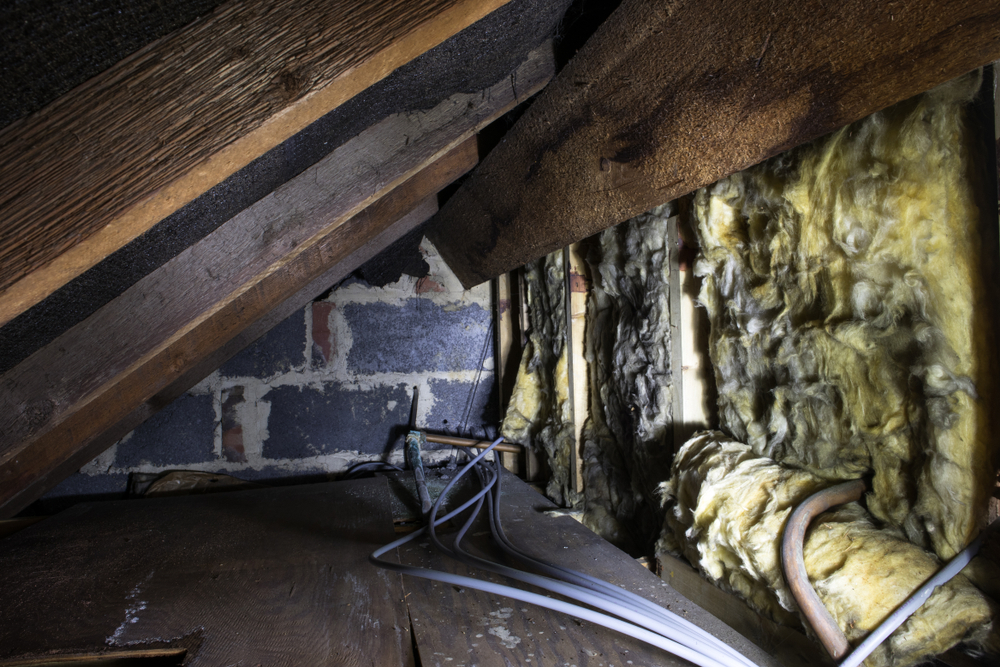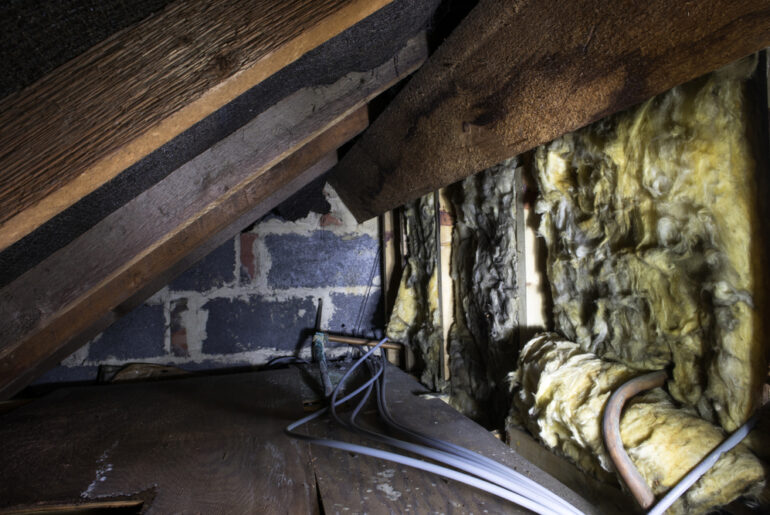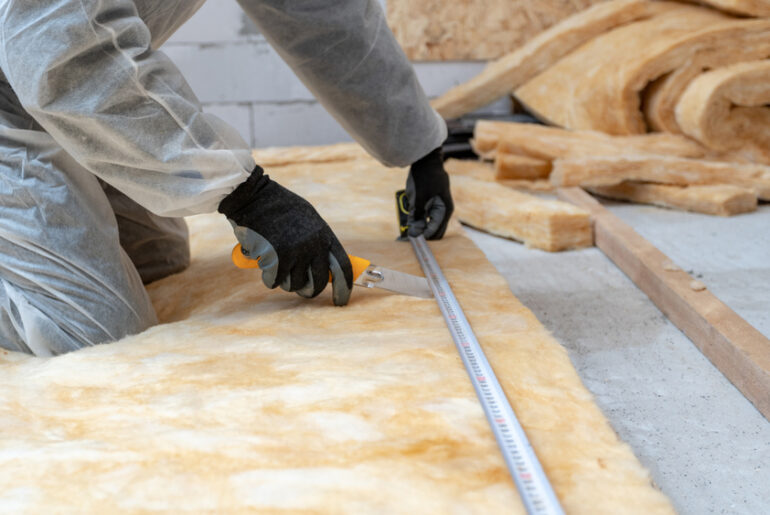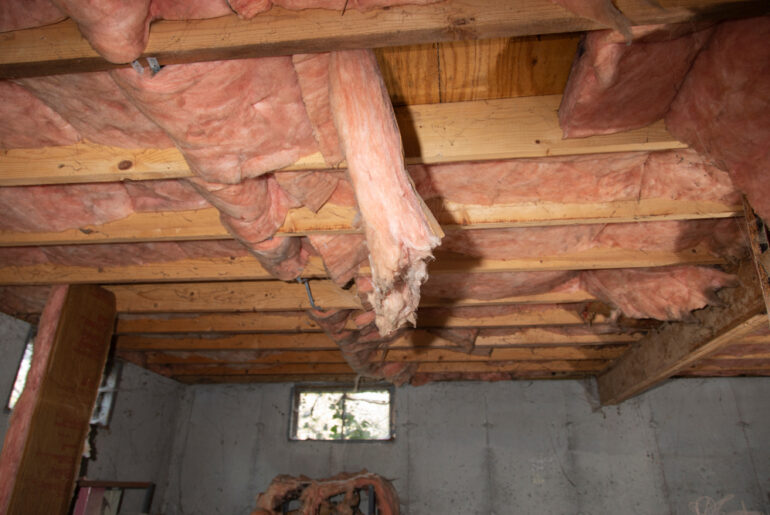Proper crawl space insulation can make all the difference when it comes to preventing ice-cold floors and ever-increasing energy costs. A well-insulated crawl space can do wonders in keeping your home toasty and allowing you to retire your constant slipper rotation.
Still, an improperly insulated crawl space can come with a host of its own issues, which just might make you wish that you could trade it for the slippers once again.
Why Removing Crawl Space Insulation Sometimes Is Necessary?
Insulation repair isn’t always very high on everyone’s list when it comes to home maintenance. However, the state of one’s crawl space insulation definitely shouldn’t be overlooked. Damaged or unsuitable insulation can lead to a host of other issues.
In some cases, improper crawl space insulation can cause more harm than good. Fiberglass insulation and plastic sheeting are two common types of insulation to be wary of in crawl spaces.
Fiberglass Insulation
Fiberglass insulation is the kind that most people think of when they think of insulation – the pink, fluffy stuff found inside the walls of your home that makes your hands itch if you touch it.
However, despite being the industry standard for the construction of most parts of your home, it often doesn’t belong in your crawl space. Fiberglass insulation has a paper backing, and if it gets damp like it is prone to do in a crawl space, this paper backing will become the perfect home for mold to grow. This insulation is also absorbent and can absorb the humid air of a crawl space until it is so waterlogged that it falls down completely.
Plastic Sheeting
Plastic sheeting is exactly what it sounds like – a thin sheet of plastic that can be rolled out over the floor of your crawl space. While this sheeting may provide some amount of protection from the cold air coming from the ground, if installed improperly, it can harbor water underneath its surface leading to issues with mold and mildew.
Depending on the climate in your locale, crawl space insulation might not always be the best course of action. Alternative methods may work better if your crawl space is prone to flooding or taking in lots of water.
When Should You Remove Insulation From Crawl Space?
Your Insulation Got Old
The various types of insulation have different life spans, so the replacement time may vary. Spray foam, or polyurethane foam, is commonly used in crawl spaces and can have a lifespan of 80 to 100 years, similar to fiberglass insulation.
Another form of insulation, cellulose insulation, only has a lifespan of 20 to 30 years and can start degrading after 15. A contractor will be able to determine the age and condition of the insulation in place and help you decide when it’s time to replace it, as well as potentially be able to suggest a longer-term option.
Your Insulation Got Wet
Insulation within a crawl space that is prone to flooding isn’t always the best choice, as it is more likely to retain this moisture. If you live in an environment where flooding is common, your contractor might recommend a process called encapsulation rather than insulation.
Encapsulation is the process of installing a vapor barrier. This barrier is a material (either plastic or another water-resistant material) installed in the crawlspace, which will prevent water from entering. You can also ask your contractor to install a dehumidifier within the space to pull excess moisture from the air, maintaining the encapsulation for even longer.
Rodents or Pests Got In
Dirt crawl spaces are extremely vulnerable to rodent infestations. Suppose these rodents tunnel through the insulation into the crawlspace and your crawlspace lacks a permanent rodent barrier. In that case, it may be best to leave it uninsulated to prevent the need to constantly replace rodent-damaged insulation.
There are permanent rodent barriers that can be installed, though, to protect your space if you would like to install new insulation. You can install mesh screens or a rat slab, a layer of concrete that seals off the dirt floor of the crawl space from tunneling rodents.
Your Insulation Is Not Appropriate For Crawl Space
As we mentioned before, not every insulation type is suitable for crawl spaces. Fiberglass insulation should be removed from a crawl space as it is more likely to do more harm than good, especially if it gets wet. The mold that begins in this insulation can spread to your home’s wood framing causing wood rot, which could lead to costly damages to the structure of your home. The mold itself can also cause respiratory issues and allergic reactions in those exposed.
The most common types of insulation, besides fiberglass, are rigid foam, cellulose, and mineral wool. However, rigid foam insulation is definitely the recommended insulation for crawl spaces.
Rigid foam insulation: Rigid foam insulation is durable, prevents heat loss from within your home, and doesn’t support mold growth. It also seals against both air and moisture, providing maximum protection from damage.
Cellulose insulation: Cellulose insulation is a wood material and, as such, is prone to moisture retention, which can lead to mold, so it isn’t ideal for crawl spaces. It is also an attractive home to termites which can spread to the surrounding structure of your home. This type of insulation is recognized as a fire hazard as well by the Consumer Product Safety Commission (CPSC).
Mineral wool insulation: Mineral wool insulation, also called rock wool insulation, is made from a mixture of stone and slag. This insulation has flame-resistant properties and doesn’t conduct heat well, making it easier to keep your home hot or cold. However, this insulation also isn’t suitable for crawl spaces as it, too, is prone to moisture accumulation and mold growth.
Depending on the climate where you live, it also might be a good idea to install faced insulation. Faced insulation has a sheet of material attached to one side made of either kraft paper, vinyl, plastic, or foil. This sheet acts as a vapor barrier to the insulation, preventing the accumulation of moisture. However, if adding multiple layers of this insulation, it is important to make sure that only one layer is faced and that this facing doesn’t lie against another insulation layer. If the facing is against another layer of insulation, this can lead to the moisture becoming trapped within the insulation and moving into further layers.
If you live in a particularly hot, humid climate, though, sometimes faced insulation can trap the humidity within the facing and prevent it from escaping. A contractor will be able to tell you if faced insulation is the best option.
How Do You Remove Insulation From A Crawl Space?
Insulation removal is a big project to tackle and can take hours or even days of hard work to complete. If you’re going to undergo the challenge, there are some steps to remember along the way:
- Get your safety gear!
- Face Mask: a face mask protects you from inhaling dust, fiberglass particles, and other harmful particles while removing the insulation
- Protective Eyewear: goggles or protective glasses should be used to shield your eyes from dust and detritus
- Gloves and Coveralls: gloves and protective clothing will protect you from both injuries and the itching and irritation that insulation removal can cause to the skin
- Prepare your tools
- Disposal bags: it’s recommended that you choose 95-100 gallon trash bags or bigger for this job, as the removed insulation will take up a lot of space
- A high-powered vacuum or a shovel and bucket to get rid of small pieces of insulation as it falls
- Cleaning materials: dust, mold, and other litter is likely to be found, so make sure you have something to clean this up with as you go
- Cover open spaces.
You should seal off any openings to your home with plastic sheets and tape to prevent any dust or fiber particles from contaminating your home. - Begin pulling down rolls of insulation and immediately putting the removed insulation into trash bags
- Use the vacuum to vacuum up any loose particles that remain after pulling down the roll
- Repeat the process until you’ve removed all of the insulation.
If you plan on removing fiberglass insulation from your crawl space, be sure to read our guide on How to Properly Dispose of Fiberglass Insulation.





